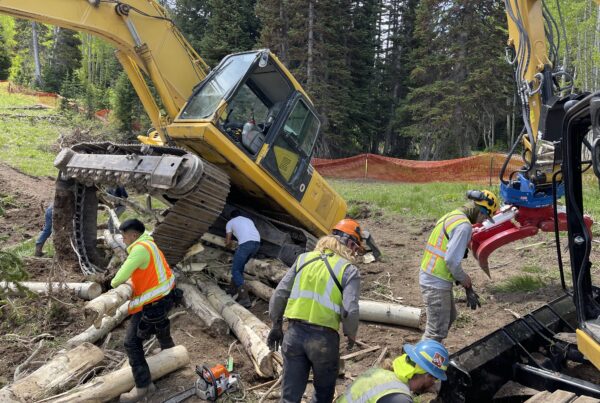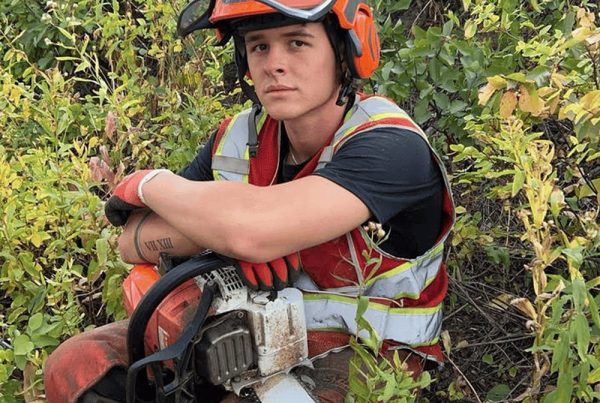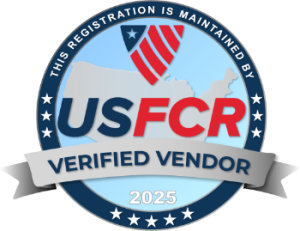Fire preparedness is the most important investment Park City and Heber City homeowners can make, because one wind-driven ember storm can erase decades of memories in minutes.
Living at the base of world-class ski resorts means crisp alpine air, but it also means steep terrain, dense conifers, and seasonal drought that combine to produce an ever-present wildfire threat.
This guide—built around wildfire preparedness checklist for Utah mountain properties—explains how to prepare my home for wildfire in Park City Utah, why defensible space creation saves structures, and how Canyon Cutters delivers forestry fire preparedness for Wasatch Uinta Mountains residents, including fire mitigation services near Park City ski resorts and the best fire readiness practices for ski-in ski-out homes in Heber City.
Table of Contents
- Why Fire Preparedness Matters in Utah Mountains
- Understanding Wildfire Behavior in Wasatch & Uinta
- Defensible Space Creation Around Mountain Homes
- Residential Fire Mitigation Services Overview
- Forestry Fire Preparedness for Mountain Residents
- Fire Readiness Checklist for Ski-In/Ski-Out Homes
- Emergency Fire Plan and Evacuation Routes
- Community Wildfire Protection Plans
- Tools & Equipment: Fire Safety Kits and Fuel Reduction
- Fire-Adapted Communities and Disaster Risk Reduction
- Canyon Cutters Services for Fire Mitigation
- FAQs
Why Fire Preparedness Matters in Utah Mountains
Park City alone added more than 600 new housing units beside forested slopes last decade, magnifying wildfire exposure. Recent Utah reports show that human-caused blazes still account for over half of statewide ignitions, while drought shortens winter snowpack, extending the burn window.
Insurance analysts warn that premiums can spike if a home lacks residential fire mitigation measures or a verified fire safety plan. Installing hardscaping in the zero-to-five-foot zone, trimming tree limbs ten feet above roofs, and keeping gutters pine-needle-free all contribute to lower risk assessments.
Canyon Cutters, locally owned & operated, helps homeowners translate science into action.
Understanding Wildfire Behavior in Wasatch & Uinta
Weather Patterns
Late-summer dry lightning, downslope winds known as “Wasatch Whirlwinds,” and low relative humidity combine to push flame fronts uphill at alarming speeds.
Fuel Types
Quaking aspens may self-prune lower branches, but lodgepole pine accumulates dead needles, making it a vertical fuel ladder. Mapping these fuels guides fuel reduction planning.
Defensible Space Creation Around Mountain Homes
The NFPA Home Ignition Zone model divides yards into three rings: Immediate (0-5′), Intermediate (5-30′), and Extended (30-100′). Each ring demands different vegetation-management tactics.
- Immediate Zone: Replace cedar mulch with gravel; store firewood at least 30′ away.
- Intermediate Zone: Space conifers 10′ apart; mow grasses below 4″ before July 1.
- Extended Zone: Thin dense stands to reduce crown fire potential.
Utah’s state defensible-space guidelines echo these prescriptions.
Residential Fire Mitigation Services Overview
Canyon Cutters provides wood chipping, tree removal, stump grinding, and storm cleanup to create the defensible buffer insurers look for. Their dump-truck hauling removes slash piles before burn bans tighten.
Residents searching for home fire preparedness or an emergency fire plan can book a site visit through Doug@canyoncutters.com.
Forestry Fire Preparedness for Mountain Residents
Large acreage owners benefit from forestry fire preparedness for Wasatch Uinta Mountains residents, a package that includes fuel-break layout, shaded fuel-break thinning, and erosion/drainage construction solutions to keep rainstorms from washing ash into trout streams.
Our crews consult U.S. Forest Service Fire-Adapted Communities guidelines to align private projects with regional priorities.
Fire Readiness Checklist for Ski-In/Ski-Out Homes
This wildfire preparedness checklist for Utah mountain properties distills local code and national best practices:
- Install metal mesh ember screens over attic vents.
- Maintain a 100-foot fuel-modified zone by scheduling annual fuel reduction planning with Canyon Cutters.
- Keep eaves clean during August’s peak lightning season.
- Stock a fire safety kit for every family member.
- Practice the emergency evacuation plan twice per summer.
The checklist doubles as a fire readiness checklist that HOA boards can distribute.
Emergency Fire Plan and Evacuation Routes
The Ready.gov evacuation hub recommends two routes in opposite directions. Park City’s official map highlights SR-224, SR-248, and Old Ranch Road as primary corridors.
Mounting reflective address signs helps first responders locate homes through thick smoke—an easy win for emergency response readiness.
Community Wildfire Protection Plans
Signing on to a community wildfire protection plan can unlock state grants. Firewise USA offers templates and Utah DNR provides advisors who verify defensible space creation.
Neighborhoods that pass annual inspections may qualify for lower HOA insurance rates, reinforcing disaster risk reduction as both a civic duty and an economic incentive.
Tools & Equipment: Fire Safety Kits and Fuel Reduction
Every vehicle should carry a shovel and five-pound fire extinguisher during fire season. Homeowners should maintain a 50-foot garden hose with quick-disconnect fittings.
Store your fire safety kit in a waterproof bin: three days of food and water, N95 masks, goggles, headlamps, phone chargers, copies of IDs, and pet supplies. FEMA’s emergency supply list is a reliable starting point.
Fire-Adapted Communities and Disaster Risk Reduction
Fire-adapted communities share four traits: fuel reduction planning, emergency response readiness, public education, and insurance alignment.
Programs like Park City Fire District’s Ready, Set, Go! connect residents with state fire-sense campaigns, creating a culture of vigilance rather than fear.
Canyon Cutters Services for Fire Mitigation
Canyon Cutters covers the full lifecycle of residential fire mitigation: initial assessment, paperwork for permits, mechanical thinning, wood chipping, hauling, and long-term maintenance. We also handle snow removal, ensuring driveways remain clear for fire engines even in January.
Call (435) 604-5658 or (201) 960-8275 to schedule a walk-through, or email Doug@canyoncutters.com.
FAQs
What is the first step of fire preparedness for a mountain home?
Create immediate defensible space by removing combustibles within five feet of the structure.
How often should I update my emergency fire plan?
Review routes and supplies every spring and after any major property change.
Will insurance premiums drop if I hire Canyon Cutters?
Utah insurers may offer discounts once proof of mitigation work is submitted; consult your carrier.
What permits are required for large-scale tree removal in Summit County?
Canyon Cutters handles county forestry permits and submits erosion-control plans when needed.
How soon after a wildfire can Canyon Cutters begin property rehabilitation?
We typically start erosion control and re-seeding within two weeks of fire containment, pending safety clearance.









